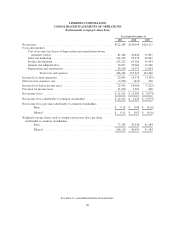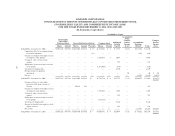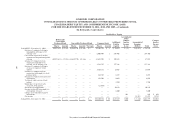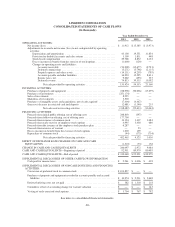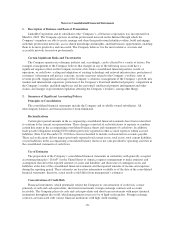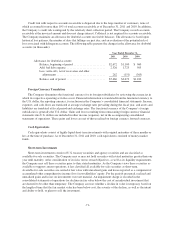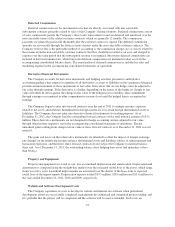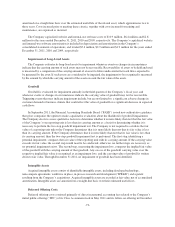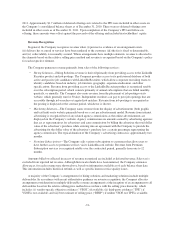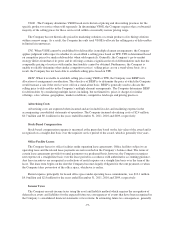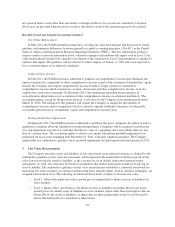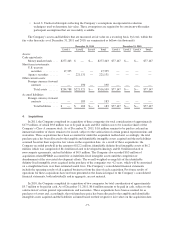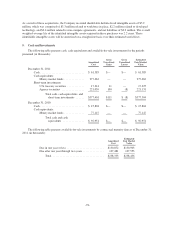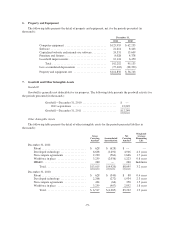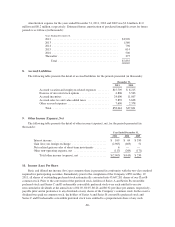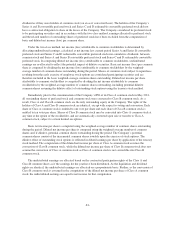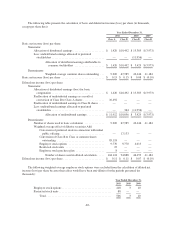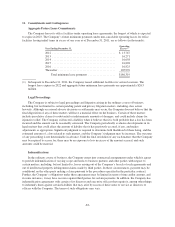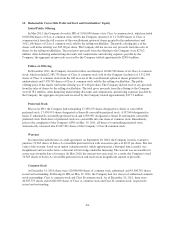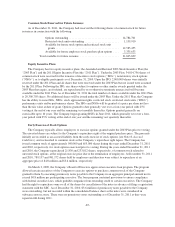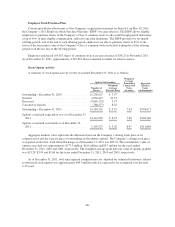LinkedIn 2011 Annual Report Download - page 80
Download and view the complete annual report
Please find page 80 of the 2011 LinkedIn annual report below. You can navigate through the pages in the report by either clicking on the pages listed below, or by using the keyword search tool below to find specific information within the annual report.all expected future events other than enactments or changes in the tax law or rates are considered. Valuation
allowances are provided when necessary to reduce deferred tax assets to the amount expected to be realized.
Recently Issued and Adopted Accounting Guidance
Fair Value Measurement
In May 2011, the FASB amended existing rules covering fair value measurement and disclosure to clarify
guidance and minimize differences between generally accepted accounting principles (“GAAP”) in the United
States of America and International Financial Reporting Standards (“IFRS”). The new authoritative guidance
requires entities to provide information about valuation techniques and unobservable inputs used in Level 3 fair
value measurements and provide a narrative description of the sensitivity of Level 3 measurements to changes in
unobservable inputs. The guidance will be effective for the Company on January 1, 2012 and is not expected to
have a material impact on its financial statements.
Comprehensive Income
In June 2011, the FASB issued new authoritative guidance on comprehensive income that eliminates the
option to present the components of other comprehensive income as part of the statement of shareholders’ equity.
Instead, the Company must report comprehensive income in either a single continuous statement of
comprehensive income which contains two sections, net income and other comprehensive income, or in two
separate but consecutive statements. In December 2011, the requirement regarding the presentation of
reclassification adjustments out of accumulated other comprehensive income was deferred indefinitely. The
accounting update, except for the provision deferred, is effective for the Company in its interim period ended
March 31, 2012. The adoption of this guidance will require the Company to change the presentation of
comprehensive income and its components which is currently reported within the statements of redeemable
convertible preferred stock, stockholders’ equity and comprehensive income (loss).
Testing Goodwill for Impairment
In September 2011, the FASB issued new authoritative guidance that gives companies the option to make a
qualitative evaluation about the likelihood of goodwill impairment. Companies will be required to perform the
two-step impairment test only if it concludes that the fair value of a reporting unit is more likely than not, less
than its carrying value. The accounting update is effective for annual and interim goodwill impairment tests
performed for fiscal years beginning after December 15, 2011, with early adoption permitted. The Company
adopted this new authoritative guidance for its goodwill impairment test performed in the third quarter of 2011.
3. Fair Value Measurements
The Company measures assets and liabilities at fair value based on an expected exit price as defined by the
authoritative guidance on fair value measurements, which represents the amount that would be received on the
sale of an asset or paid to transfer a liability, as the case may be, in an orderly transaction between market
participants. As such, fair value may be based on assumptions that market participants would use in pricing an
asset or liability. The authoritative guidance on fair value measurements establishes a consistent framework for
measuring fair value on either a recurring or nonrecurring basis whereby inputs, used in valuation techniques, are
assigned a hierarchical level. The following are the hierarchical levels of inputs to measure fair value:
• Level 1: Observable inputs that reflect quoted prices (unadjusted) for identical assets or liabilities in
active markets.
• Level 2: Inputs reflect: quoted prices for identical assets or liabilities in markets that are not active;
quoted prices for similar assets or liabilities in active markets; inputs other than quoted prices that are
observable for the assets or liabilities; or inputs that are derived principally from or corroborated by
observable market data by correlation or other means.
-76-


